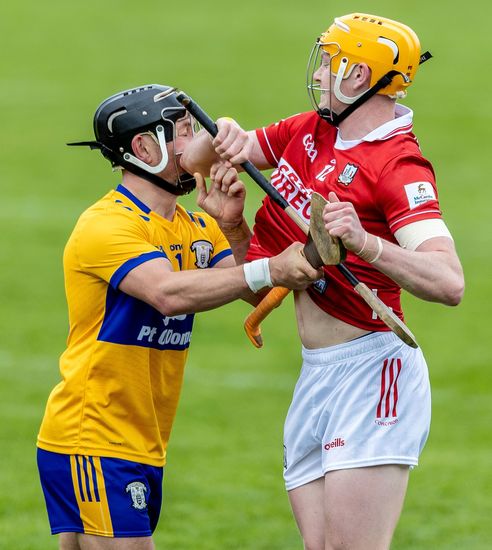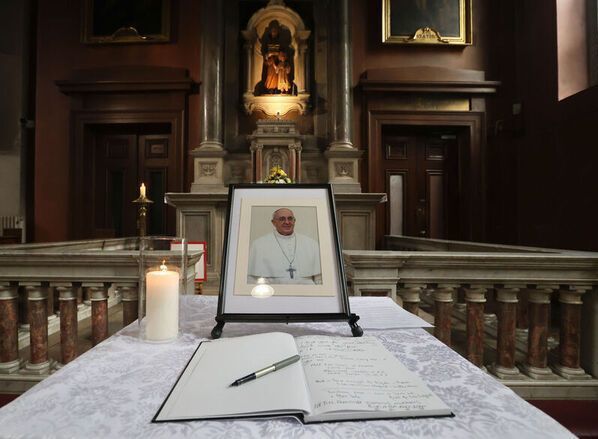Breslin is back at the Daily News and Pete Hamill has a new book out that everybody is talking about, "Tabloid City." And that's good news, but sadly, both events also remind me that something important to Irish culture is slipping away from us. The sort of journalism they both perfected as they wrote stories in the Daily News and the New York Post about the city's Irish working-class neighborhoods is fading away. And so are some of the Irish neighborhoods they wrote about.
The first time I ever read a newspaper column by Pete Hamill I was sitting in Kerrigan's bar in Windsor Terrace, Brooklyn one afternoon, reading the New York Post. It was in the 1960s, and I had just come home from two years in the Army. I was 22.
I didn't know who Pete Hamill was, but I couldn't stop reading what he was writing about our neighborhood. He was writing about the factories on 7th Avenue, about the local bars like Farrell's on 16th Street and 9th Avenue, and how his father from Belfast, Ireland, drank there. My father from Galway, Ireland, drank there too.
I remember holding up the Post, a liberal newspaper at that time and hated in our conservative neighborhood, and asking the bartender if he knew who this guy Pete Hamill was. And I remember what he said to me. "He's that effing Communist from down on 7th Avenue. And he went to Holy Name School, too," he said, shaking his head, as he mentioned the parochial school we all went to. He said more, but I don't remember it.
All that stuck in my mind was that he was writing about us. Our world. And I knew then for the first time that I wanted to be a writer.
The sort of writing he was doing, picking up on Irish-American working-class stories in his journalism where James T. Farrell left off in his fiction with his Studs Lonigan trilogy is disappearing.
His Studs Lonigan could have been a local legend in Windsor Terrace that he wrote about in his columns, a dock worker named Noonan Taylor, who some said was the toughest man in Brooklyn. He wrote about bar fights, and drinking your fill of whiskey and beer on the weekends after a week of back breaking, labor in the factories of the neighborhood, and slow dancing with the neighborhood girls on Saturday nights down in places like the Caton Inn on Coney Island Avenue as the song "Dream," by Jo Stafford, played over and over again on the juke box.
The late Jimmy Cannon was probably one of the first Irish-American journalists to cross the vague line that bordered fiction and factual writing in newspapers, and doing it before anyone ever heard the term "New Journalism."
After Cannon came a long list of other Irish-American journalists like: Hamill, Jimmy Breslin, Joe Flaherty, Dennis Duggan, Jack Deacy, Jim Dwyer, Dan Barry and T. J. English, all of them with their own story to tell about New York's Irish working-class.
Before Joe Flaherty got his first by-line, he worked as a longshoreman on the docks of Red Hook, Brooklyn, unloading grain bags as a member of the union his late father was the president of, Local 1266 of the Grain Handlers.
Flaherty, who wrote for the Village Voice, and sadly died too young, was no doubt one of the best of them. He once told me that "if you really want to find out about this city go out and talk to a guy who cuts meat for a living. Talk to a guy who makes a living behind the stick of a bar. They'll tell you what's really wrong with it. They know more about it than any politician."
Their beat was up in the bars of Bainbridge Avenue in the Bronx, it was Beach 116th Street in Rockaway, and places like 9th Avenue down in Windsor Terrace, Brooklyn, that once had Irish saloons on both corners of 17th Street, Kerrigan's and McNulty's, it was T.J. English's Hell's Kitchen, and Breslin's Queens Boulevard, lined with bars and cocktail lounges all the way down to the entrance of the 59th Street Bridge -- bars where stories of the city were told again and again over whiskey and beer on Saturday nights.
They were all writing about the ordinary ruck of life that existed in these places. The Daily News, where Breslin worked for more than a decade, probably has two of the last of that genre of writers left, Denis Hamill and Michael Daly.
I got to know Breslin after I had a story published in New York Magazine in 1973. It was called "Confessions of a Working-Stiff," about my years of working as a cargo-man out in Kennedy Airport for Seaboard World Airlines.
He was always telling me to write a book. One afternoon when we were drinking in a rough, cargo man's bar called the Owl, near Kennedy Airport, I told him that I had gone to the library and took out a book on how to write a novel.
I had been working with him on an idea he had about turning the world of cargo men at Kennedy Airport into a pilot for a television series.
I remember him uttering a string of curses under his breath and then barking at me in that gravelly Breslin voice that turned every head in the bar, "Jesus, you don't read a book on writing a book; you just write it."
I tried to spit out that I just wanted to get an idea of how many chapters a novel should be, how long it should be, but he would have none of it as he shook his head in annoyance. "Don't worry. You'll know when it's done."
After that outburst, I was nearly afraid to ask him my next question. Would he sign a first edition I brought with me of his novel "World Without End, Amen"? He took some time writing in it, so I asked him what he wrote. He just barked, "Never mind. Read it later." And he slammed it shut.
When I got home, I opened it up and read the words, "May 11, 1978. For Pat Fenton. Who should simply sit down and start writing 2 pages a day for the next year. Sincerely, Jimmy Breslin."
Some Saturday afternoons I would just walk into the old Daily News building on 42nd Street, and take an elevator up to the floor he was on. This was in the 1970s, before metal scanners. He would be sitting alone in a glass fronted, small office at the end of a long hall. I would watch him struggle with his newspaper column with the pressure of a deadline pushing on him. He would stop every now and then and scream at me, "Answer the phone."
His coat would be thrown over a chair and his tie would be hanging unmade around his neck, as if he was getting ready for a bar fight rather than the creative act of writing. The sweat would roll down his head in beads and all along his desk, and on the floor there would be piles of crumpled paper with his discarded words. With the intensity of a bullfighter, he would stare at the typewriter that held paper covered with his pen marks.
When he was finished writing, he would sit back in his chair and read his copy to an editor over the phone, and the story would appear in that night's Bulldog edition of the Sunday Daily News with all the smoothness and spontaneity of a great barroom tale.
Then he would knot up his tie again, walk out of the Daily News building, hail a cab, and wave as he disappeared into the streets of the city.
Today, the sort of Irish working-class journalism that he, Jimmy Cannon, and Pete Hamill came out of is also disappearing, and so is the world that nurtured it. Glasses up to the lot of them.










